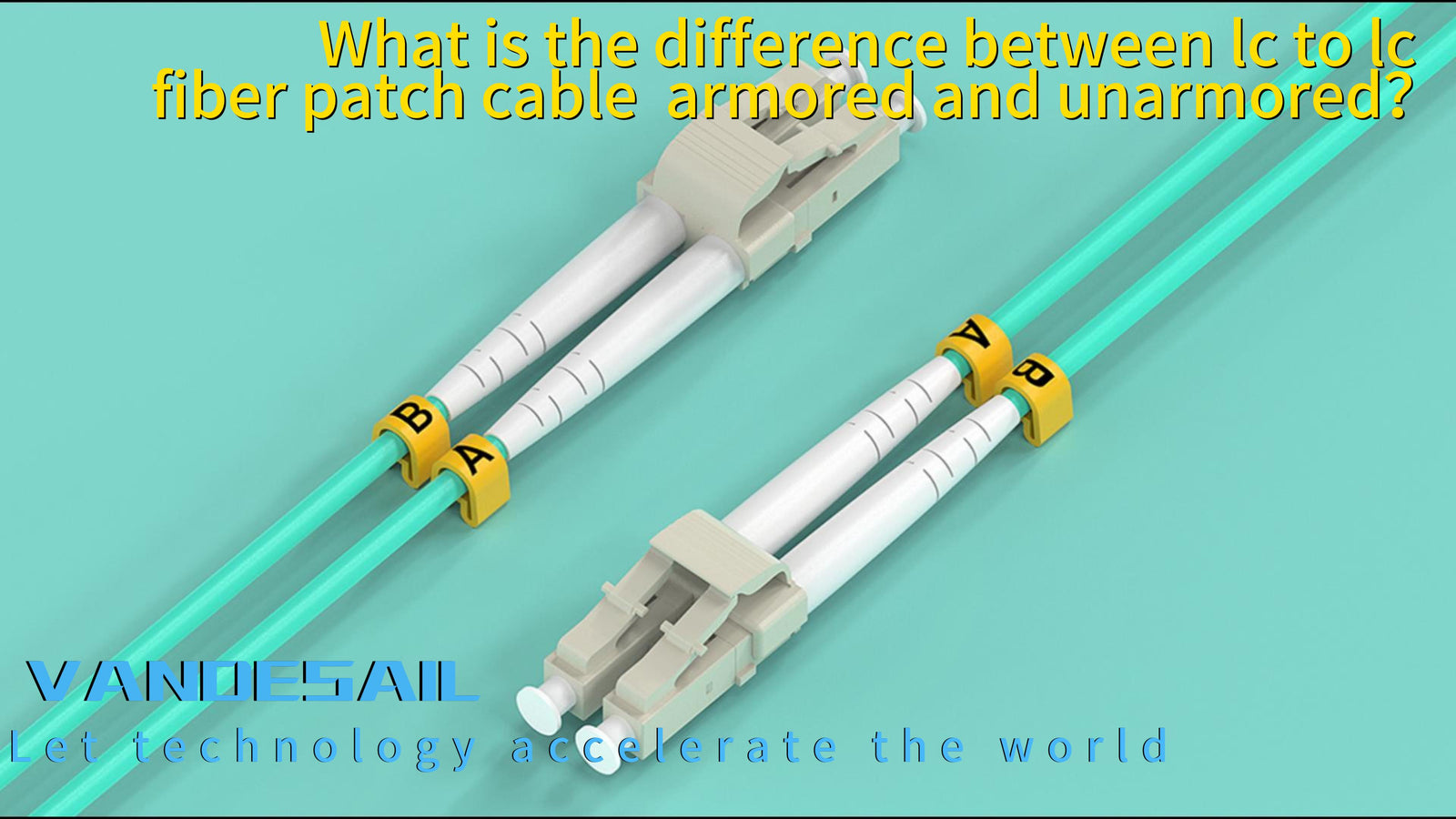With the rapid development of optical communication networks, more and more fiber patch cables are being used in different environments. If you are in a harsh environment, it is vital to ensure that your fiber patch cables are safe when transmitting data, and this is where armoured fiber patch cables come into play. Armoured fiber patch cables protect the cable from mechanical damage, whereas unarmoured cables are not protected. This article will explain the difference between armoured and unarmoured fiber patch cables.
What are armoured and unarmoured fiber patch cables?
Armoured fiber patch cables are a type of fiber patch cable that has protective armour wrapped around the fiber patch cable core. The armour is used to protect the cable from animal bites, moisture, or other damage. Additionally, armoured fiber patch cables have jackets, aramid, lightweight steel tubes, and fiber patch cable layers to protect the cable. The plastic jacket protects against rodents, abrasion, and twisting. A light steel tube between the fiber and the outer jacket provides better protection for the fiber in the center, and Kevlar is placed inside the outer jacket to cover the tube.
Non-armoured fiber patch cable, or unarmoured fiber patch cable, is a type of fiber patch cable that does not have an armoured protective layer. For example, unarmoured stranded loose-sleeved fiber patch cables offer FRP (Fibre Reinforced Plastic) as the central member to ensure resistance to electromagnetic interference. The high-strength loose casing is hydrolysis-resistant, and the tube is filled with compounds to ensure critical protection of the fiber. A single-layer polyethylene (PE) jacket with a water-blocking material between the loose tube keeps the cable compact and watertight.
Armoured vs Unarmoured Fiber Patch Cables
Structure:
Many people may think that armoured fiber patch cables are just metal that serves as protection. More specifically, the armouring material does not have to be metal; it could be fiber yarn, glass yarn, polyethylene, etc. The only difference between armoured and unarmoured fiber patch cables is that armoured cables have an extra outer protective layer used for the fiber patch cable. 4 core armoured cables tend to be more expensive than unarmoured cables, while armoured cables with steel tape and aluminium are much cheaper than Kevlar armoured cables, which are usually used for special occasions.
Applications:
Armoured fiber patch cables are used in core networks, metropolitan area networks (MAN), LANs, access networks, backbones, FTTH, data centres, as well as overhead and ducted installations for indoor, outdoor, and indoor/outdoor applications.
Unarmoured fiber patch cables are used for overhead and ducted installations in high EMI locations, outdoor power distribution, control systems, trunk transmission systems, access networks, and local networks.
Armoured fiber patch cables are more robust than unarmoured cables. They have good pressure resistance, high reliability, safety, flexibility, and durability for use in harsh environments, are easy to install but are more expensive than unarmoured fiber patch cables. Ordinary patch cords are prone to wear and tear after a longer period of time, affecting the transmission quality. The reuse rate of armoured patch cords is much higher than that of ordinary patch cords, up to about 75% (this data varies depending on the complexity of the specific cabling), while most of the ordinary ones can't be recycled, and the recycling rate is less than 20%. High durability and repeatability can reduce the cost of cabling and reduce the waste of resources.
What is the difference between OM3 lc to lc fiber patch cable armored & unarmored

zhubinyan |